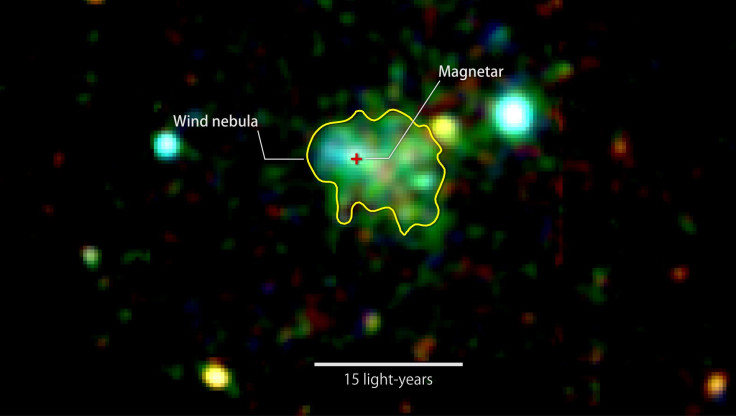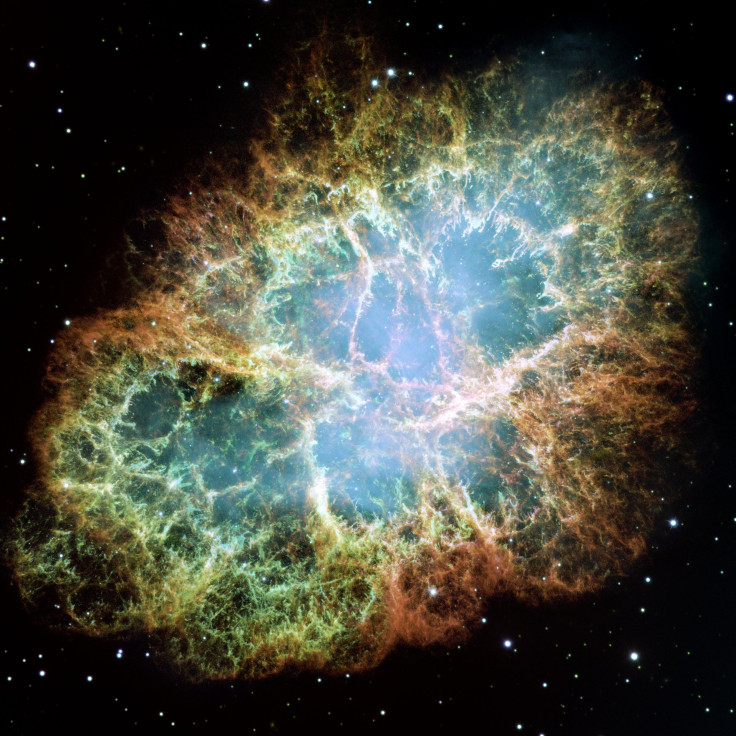In A First, Scientists Discover ‘Wind Nebula’ Around An Ultramagnetic Neutron Star

The cosmos we live in is home to several mysteries. Even so, magnetars — exotic neutron stars with extremely strong magnetic fields — would definitely push the envelope when it comes to the rare, the quirky and the bizarre.
A new discovery has now added to the mystery surrounding these incredibly rare neutron stars. For the first time ever, scientists have detected a vast cloud of high-energy particles called a “wind nebula” surrounding a magnetar — in this case, a magnetar named J1834.9 located roughly 13,000 light-years away near the central part of our galaxy.
“Right now, we don't know how J1834.9 developed and continues to maintain a wind nebula, which until now was a structure only seen around young pulsars,” George Younes, a postdoctoral researcher at George Washington University in Washington, D.C., and lead author of a study to be published in the Astrophysical Journal, said in a statement. “If the process here is similar, then about 10 percent of the magnetar's rotational energy loss is powering the nebula’s glow, which would be the highest efficiency ever measured in such a system.”
Pulsars are rotating neutron stars, which are immensely dense stars created as a result of a massive star collapsing in on itself. As a pulsar rotates, it emits high-energy radiation into the cosmic void, similar to a lighthouse casting beams of light. If this beam of high-energy radiation is pointed toward the Earth, the pulsars can be detected using telescopes.

The magnetic fields produced by pulsars can be 100 billion to 10 trillion times stronger than Earth’s. Magnetar fields, meanwhile, are a thousand times stronger.
However, scientists still don’t know the details of how the magnetar fields are created — primarily because these structures are incredibly rare. Of the roughly 2,600 neutron stars known to date, only 29 are classified as magnetars.
That is why the discovery of a wind nebula — which is created around a pulsar when its fast rotation and strong magnetic field interact to accelerate electrons and other particles to very high energies — around a magnetar assumes special importance. The discovery may provide scientists the much-needed clues to the birth, evolution and properties of magnetars, which, unlike pulsars, are capable of generating only brief bursts of accelerated particles.
“For me the most interesting question is, why is this the only magnetar with a nebula? Once we know the answer, we might be able to understand what makes a magnetar and what makes an ordinary pulsar,” co-author Chryssa Kouveliotou, a professor at George Washington University’s Columbian College of Arts and Sciences, said in the statement.
© Copyright IBTimes 2025. All rights reserved.






















